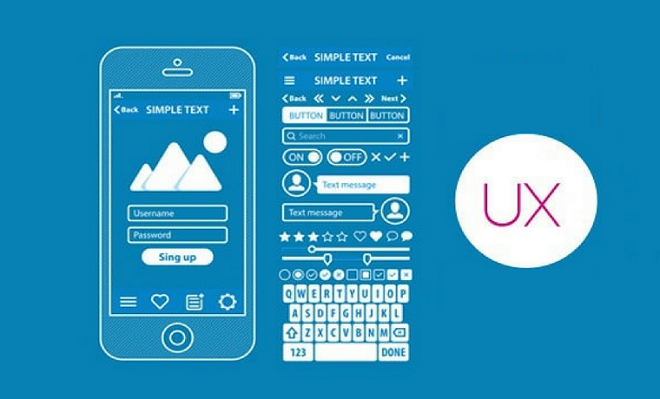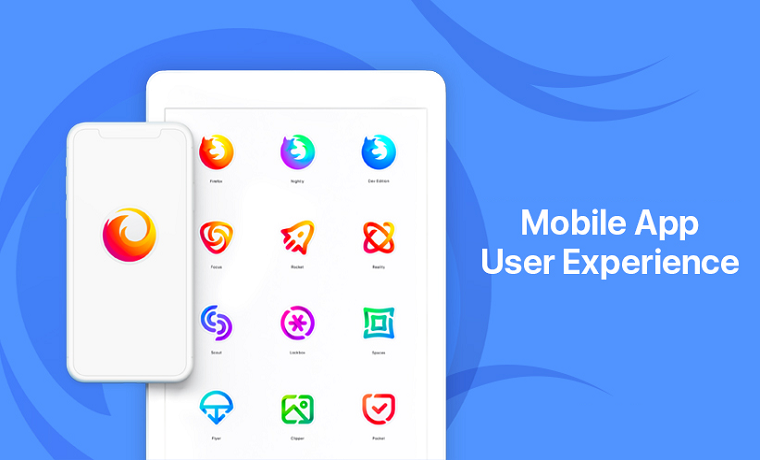Usability and on-boarding experience define how good or useful your app is. If your app offers an immersive and extensive experience, then the chances of conversion go up, and you get better results. User experience defines how good or bad your app is, and whether or not your app will get the desired conversions.
According to statistics, the experience will be the key differentiator for mobile apps. How good an experience you offer will dictate the conversions for your mobile app.
The visit to lead conversions will see a 400% increase with a good experience.
To make sure your app is likable, easy to use, and functional, you need a good on-boarding experience, which is a result of good UX design. When we say good, we also mean that you need to keep it as simple and specific as possible to increase conversions and improve app usability.
Here, we will take you through the simple steps that will help you cater to the simple UX design needs, and get your app to the top of the market.
Let’s take a look at the reasons why you should invest in user experience for the mobile app.
Benefits of User Experience
- The user experience is important for customer on-boarding and enhancing their interest in your mobile app. This will increase customer satisfaction, leading to more downloads and improving user loyalty. Basically, if the app is engaging and useful, it increases the interest levels and improves the experience
- When you offer or rather boost user experience, you are also focusing on the customer’s requirements. You study their usage patterns, and try to imbibe the same in your mobile app. as a result, your app is usable, and increases the user’s engagement, thus leading to the better audience base
- When you have a mobile app that boosts user experience, you tend to grow as a brand as well. Your brand name is associated with mobile visibility, which builds trust and reputation for you. as a result, you will be able to garner maximum reach through the mobile app solution.
Basically an experiential app offers trust, increases user base, and improves the usability of the mobile app, thus exceeding customer expectations.
Now that you know how the user experience boosts your mobile app conversions, it is important to know how to introduce a simple user experience design into your mobile app.

Designing a Successful User Experience
1. Keep it Uniform
The first need for successful user experience is maintaining uniformity. You ought to make sure that all the elements in your design are uniform across the pages. If you have headers that are blue in color, then you need to maintain its uniformity. If you have headlines and normal lines in different fonts, then make sure you have defined the fonts, and maintain the uniformity throughout the app. this will help engage the users better. If they find different fonts, colors, and even sizes through the app pages, they will not be able to maintain their interest in the mobile app, which can result in user attrition eventually.
2. Keep it Simple
As we have already discussed, it is important to maintain the design simplicity if you want to maximize the conversion for your mobile app solution. The simple design includes standard interfaces and intuitive designs. If the user has been looking at login screens with login credentials or social signup, don’t change this aspect. You should continue using what the user finds most convenient.
3. Utilize Standard Elements
Users don’t need a steep learning curve when they are trying to use your app, which is why you need to implement standard elements into your design. This will help you build a good app design, one that is both intuitive and usable. What we mean by standard elements include buttons, symbols, and even icons that are easy to comprehend and use. By using standard elements, you are more likely to win the audience’s hearts, and they are going to take a liking to your app. chances of getting a higher rating and recommendation are more with the standard elements within your app.
4. High-Speed Solutions
Speed matters, and it matters the most when you are designing mobile app solutions. Yes, you need to create an app that will open fast and help the users use the elements with ease. For instance, the loading speed should be less than 3 seconds, as your user won’t wait that long. Ensure that the elements you use within the app also load faster, so that the user can actually stay on the app and engage better. The slower your app loading speed is, the faster the attrition rate is for you.
5. Fewer Fonts, High-Resolution Images
When designing an app solution for your business, make sure you use fewer fonts for a screen and high-resolution images. Keep the images in a way that they don’t hamper the loading speed for the page. The user needs to get engaged within 3 seconds, and the only way you can get their attention is by talking to them through fewer words and using more images to do the explaining.
6. Proper Experience Testing
When you are planning UX for your mobile app solutions, you need to make sure that your designs are properly tested. You need to identify the audience that resonates with your brand the most, and accordingly design the user experience test phases for the audience. You will need to test your designs with the people who are going to use it. define your audience, and identify the group that will help you with your A/B testing. When you are able to fine-tune your designs to match the testing demands, and to the user’s needs, you can launch your mobile app solution.
7. Learn from the Past
What you learn from your past mobile app development solutions is what you need to use when designing an app at the moment. Learn from all the past iterations you have made to design the user experience. You can also learn from other experienced designers, and take a cue as to what needs to be added, and what can be removed from the mobile app solution. it is important to keep the learning curve smooth, use design results from other people, and create impactful solutions. From navigation to actual information, you will need to put everything into place when designing for the user experience.
8. Resolve All Errors
When designing for the users, make sure you have correctly observed all the possible errors that may occur, and you are ready with the solutions for these errors. If possible, before you begin the testing phase, make sure you have dodged all the errors, and you are ready to go ahead with the launch phase. If there is a possibility of an error, make sure you have designed an error page that is experiential and engaging too.
Summing Up
When you are redesigning your app or, you are planning on reinventing certain aspects of your mobile app, make sure you have considered user experience design as well, and you are ready with the experience design that will intrigue and engage the users. It is important to keep the design uniform, engaging, and simple. Make sure you allow users to offer their feedback on the app solution, and you take it into account when designing the mobile app experience.
These are just some of the tips. You can even personalize the design with an increased understanding of the audience and their app usage behavior.
Author Bio:
Pradeep Makhija is a Digital Marketing Executive at Space-O Technologies, a Mobile app development company. He likes to share his knowledge and experience with people around by writing articles related to mobile apps & new technology. In his spare time, Pradeep likes to explore and read more about the trends and needs of a mobile app in different sectors.

